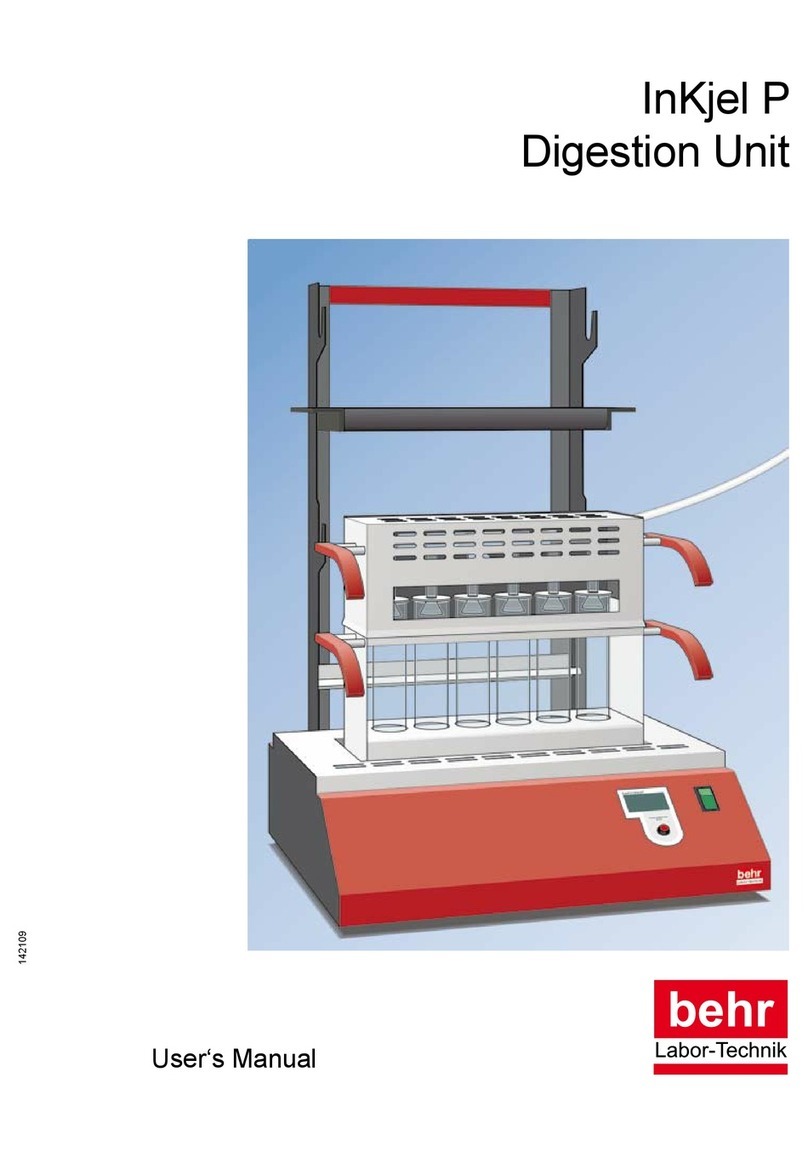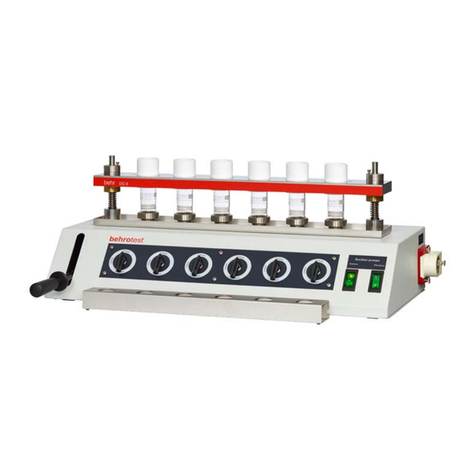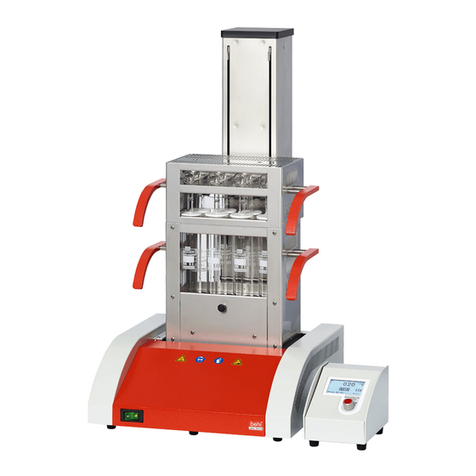
8© behr Labor-Technik GmbH
217201
Taking Out and Inserting the Crucibles
Crude-Fibre determination with the CF 2+2 / CF 6
is performed with the same filter crucibles for
digestion, filtration and incineration. The crucibles
are locked under the condensers of the digestion
device. In order to insert the crucibles, to take them
out or to transfer them from the digestion device
to the defattening device and back, there's the
multi-crucible snapper. It makes you sure not to mix
the samples up. (On delivery, the crucibles came
packed separately.)
If you unlock the lock lever without
gripping the crucibles before with the
multi-crucible snapper, the crucibles
will fall out of the device and break.
So always grip the crucibles with the
multi-crucible snapper, then unlock
the lock lever and take the crucibles
out simultaneously. Doing it this way,
you always have the crucibles in the
proper order and are sure not to mix
the samples up.
During a digestion, the crucibles are concealed
behind the heat shield. In order to take the
crucibles out after digestion and filtration, you need
first to take the heat shield off.
Grasping the heat shield with the handle, lift it
up a bit so the two "keyholes" will pass over the
pins that are holding it.
Take the heat shield off and lay it aside.
Now push the multi-crucible snapper on the
crucibles that are locked in the device. You will
need to press quite firmly until all four or six
spring clips have properly locked on the cruci-
bles.
Now you can unlock the crucibles:
Release the lock lever by pressing it down a
bit and pulling the locking grip towards yourself
with your thumb.
Let the lever come up to the end position;
release the locking grip as soon as the lever is
out of the lock position.
With the multi-crucible snapper, take the cru-
cibles out of the device and insert them in the
crucible rack in front of the device.
In order to insert the crucibles in the device again,
proceed in inverse direction. In the same way insert
the crucibles in the optional defattening unit DG 2+2
/ DG 6 and back out.
Some Routine Procedures With This Device
































